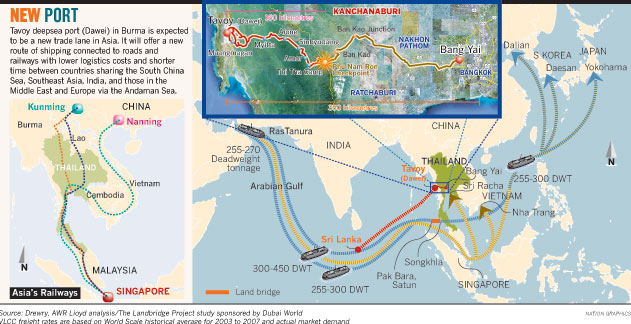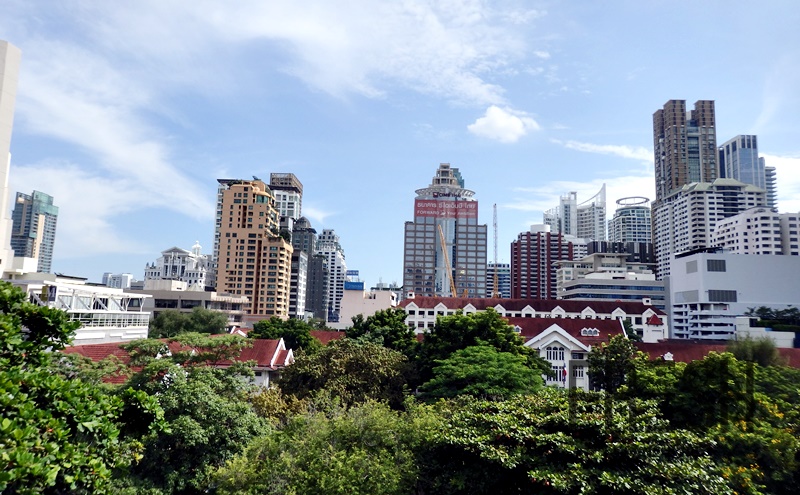Tavoy mega-port will be a major challenge for Ital-Thai Development
 The deepsea port planned for Tavoy on
The deepsea port planned for Tavoy on
The initial stage of the mega-investment project is worth US$8.6-billion (Bt254 billion).
Marine Department officials at the Ministry of Transport have insisted that another port project at Pak Bara in Satun be maintained at a size of 800,000 tonnes of cargo a year.
A Cabinet meeting on June 29 ordered the ministry to review the size of Pak Bara for multi-purpose uses or tourism. At this scale, it would cost around Bt12 billion.
Tawalyarat Onsira, head of the Marine Department said last week the Office of Transport and Traffic Policy and Planning (OTP) was now studying the feasibility of the Tavoy deepsea port (known as Dawei in
The OTP had also asked for comment on guidelines on downsizing the
He said
This included shipping goods to and from
“If you focus on the Tavoy deepsea port [solely], it is like borrowing another person’s nose. More important is that the port’s location is far from many main international shipping routes, compared to Pak Bara port,” Tawalyarat said.
However, the future of Pak Bara port depended upon the government.
Plans for Pak Bara deepsea port were for it to handle three 50,000 deadweight-tonne (DWT) vessels or two 70,000 DWT vessels at the same time.
For the Tavoy deepsea port, its tentative infrastructure costs were divided into four items – the deepsea port for $1.37 billion, infrastructure for the industrial estate ($2.41 bn), a trans-border corridor ($3.39 bn), associated works including business building, public areas, commercial complex and Burmese authorities’ centre for $1.37 bn.
Construction will commence in January on the deepsea port as well as roads linking public utilities and facilities in the industrial zone’s first phase, according to a presentation by the Federation of Thai Industries (FTI) last month. The port and industrial zone will take about five years to build.
The size of Tavoy will be much bigger than Laem Chabang and Map Ta Phut put together. It is divided into Zone A, the port and heavy industry, Zone B petroleum and chemical complex, Zone C upstream and downstream petrochemical complex, Zone D, medium industry, Zone E light industry and Zone F will be a town with homes, public facilities and a commercial complex.


